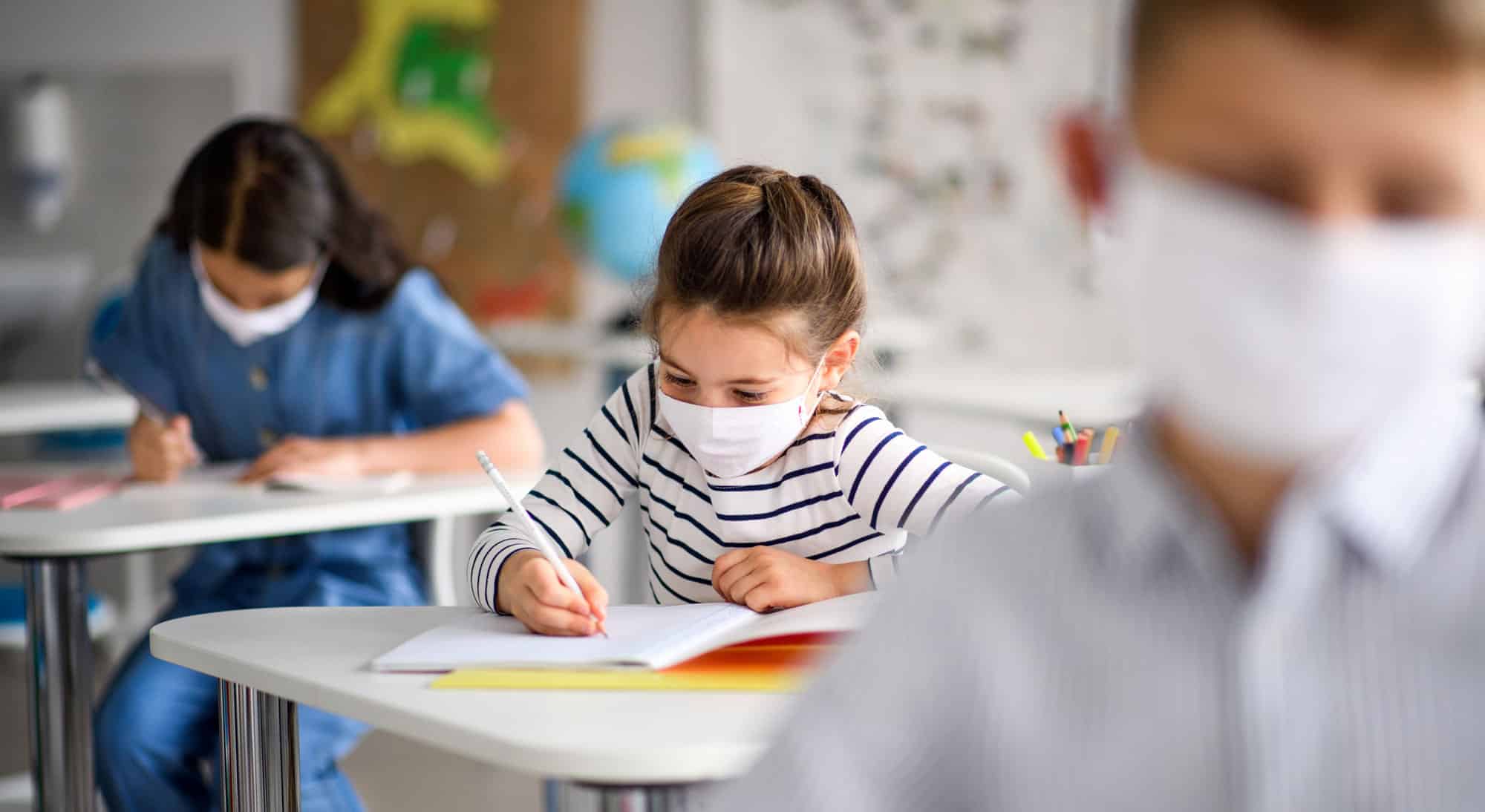By Wesley Gallagher
It’s nearing the end of 2021, and in many ways it feels like the worst of the pandemic is behind us. Even if it’s not yet over like we had hoped, we’ve settled into a new normal, and there seems to be a light at the end of the tunnel.
For many, however, the effects of all that has happened are ongoing. This is particularly true for students and teachers, who have dealt with some of the most difficult changes brought on by COVID-19. And while school looks a lot more normal now than it did a year ago, the mental, emotional, social, and academic challenges remain for many.
While school looks a lot more normal now than it did a year ago, the mental, emotional, social, and academic challenges remain for many.
Student Mental Health During COVID
K-12 students have had a rough couple of years, there’s no denying that. Children all over the world had their lives upended in early 2020 as they were sent home from school unexpectedly and thrown into the great experiment that was remote learning. School hasn’t looked normal since, whether it’s been virtual, hybrid, or in-person with masks and social distancing measures in place.
In addition to drastic changes in school routines, children have experienced heightened stress in their home environments due to the pandemic. Parents have had to juggle working from home while caring for children and overseeing remote learning, and many have lost jobs and necessary income to maintain much-needed stability for their families. According to The Pew Charitable Trusts, more than 140,000 children in the United States alone have lost a primary and/or secondary caregiver to COVID-19. And many more have dealt with the fear and anxiety that comes with loved ones getting sick.
Thankfully, most children are now back at school in person, some with more mitigation measures than others. But illness and quarantining still remain a possibility, and the mental, emotional, and academic effects of the prolonged season are showing up in classrooms.
In fact, the American Academy of Pediatrics (AAP), the American Academy of Child and Adolescent Psychiatry (AACAP) and the Children’s Hospital Association (CHA) have declared a national emergency in child and adolescent mental health due to the pandemic. Unfortunately, rates of childhood depression and anxiety were already on the rise, and COVID only served to exacerbate the problem.
Teachers’ Mental Health Also Affected
Research done by the CDC Foundation shows that teachers’ mental health has been disrupted by the challenges of COVID as well. Almost a third of teachers reported symptoms consistent with clinical depression; just over a third reported symptoms consistent with generalized anxiety, and a little more than half say they are considering leaving teaching more now than before the pandemic began.

A nationwide poll of K-12 employees published by Mission Square Research Institute highlighted several factors contributing to the decline in teacher mental health during the pandemic:
- Decreased job satisfaction
- Increased work hours
- Dramatic change in the nature of education work
- Feeling burned-out and/or wanting to change jobs
- High risk of exposure to COVID-19
- Juggling childcare while working from home
- Financial woes
- Retirement concerns
Fortunately, the return to the classroom has ameliorated some of these difficulties, but it will be a while before classrooms feel completely normal again.
COVID and Mental Health in the Classroom
One silver lining of the pandemic has been the light it has shed on mental health. Thankfully, schools and school districts across the country are working to address these challenges for teachers and students alike. Organizations like the US Department of Education and the American School Counselor Association have resources to help schools address the social, emotional, mental, and academic needs of students, as well as the needs of teachers and other staff members.
One silver lining of the pandemic has been the light it has shed on mental health.rnrn
So how can you support the children in your life as we slowly inch toward normalcy? The Centers for Disease Control and Prevention (CDC) offers a few simple ways:
- Talk to them and answer questions about COVID in an age-appropriate way
- Reassure them that they are safe
- Let them know it is okay to be upset, and share ways you cope with your own stress and emotions
- Limit exposure to news coverage and social media that children may not understand
- Be a role model by taking care of your own physical, emotional, and mental health needs
- Spend time participating in meaningful activities together such as reading, exercising, playing games, etc.
Keep an eye out for any signs of depression and anxiety in your child, and don’t hesitate to ask for help from a professional if you notice symptoms of mental health disturbances.
Don’t forget to support the education professionals in your life, too. Reach out and ask them what they need from you, whether you are a family member, friend, student, or coworker. Remember they are still in the midst of unprecedented times in education, and their roles continue to be highly underappreciated. If what they need is beyond your scope, we at The Meadows can help. With highly trained professionals specializing in mental health, we can answer questions about wellness and provide those struggling with personalized solutions. Contact us today to learn more.

